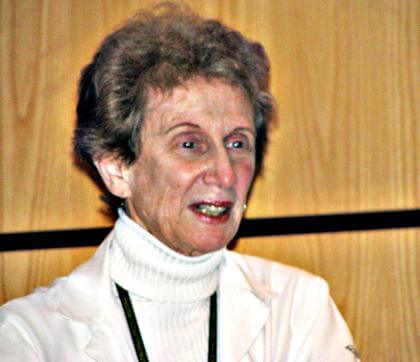By Philip Newman
Dr. Jamie Ullman was addressing surgeons, police, emergency rescue crews, traffic experts and educators who had spent the day talking about how dangerous it is to be a pedestrian in Queens and what can be done about it.
“It almost sounds as though we are asking you to put us out of business by making the job we do here no longer necessary,” Ullman said. “Well, that’s what we strive for.”
Ullman, director of the Department of Neurosurgery at Elmhurst Hospital Center, was moderator of the second-annual Pedestrian Injury Summit at the hospital Friday.
Although the numbers of pedestrians struck by vehicles have eased a bit since 2000, the 256 such injuries recorded at Elmhurst last year were the highest in 10 years.
What is being done about the plight of the pedestrian?
Capt. Joseph Ellis, city Police Department traffic manager, said his unit’s mission is to remove obstacles that force pedestrians into the streets. Ellis showed slides of unauthorized signs, illegally parked cars and trucks and construction sites that violate the law — all things that could lead walking people into harm’s way.
“We also have seasonal things like stacks of Christmas trees on sidewalks,” Ellis said.
Michelle Ernst of the Tri-State Transportation Campaign said 63 percent of pedestrian deaths nationwide were on arterial roads, or heavy traffic roads like Queens Boulevard.
“Much of our highway system was built for cars and trucks without considering design that would accommodate people walking,” Ernst said. “Features to guide and require certain behavior on the part of the motorist would help, such as ‘traffic calming’ features to slow vehicles at certain points.”
Cynthia Brown, executive director of the New York Coalition for Transportation Safety, conducts pedestrian safety classes at elementary schools — both during and after school hours.
“We pick a route and evaluate it for safety and we teach the hazards of routes, remind everyone to carry identification and report cars that run traffic lights,” Brown said. “The pupils also prepare letters to legislators reporting hazards to pedestrians.”
Dr. Stuart Kessler, director of Emergency Medicine at Elmhurst, came up with some facts on the subject:
• 69 percent of pedestrians hit by vehicles are male.
• 78 percent of car-pedestrian accidents occur at non-intersections.
• There is an 85 percent chance a pedestrian will die if the vehicle that struck him was traveling 40 mph.
• One in every five vehicle-pedestrian accidents involves a hit-and-run driver.
• Some 35 percent of the pedestrian victims have been drinking as well as 16 percent of the drivers.
Dr. Judith Levine, an Elmhurst orthopedic surgeon who works on pedestrians injured by vehicles, was not on the program, but Ullman introduced her anyway.
Levine, wearing her white scrub suit, may now have a perspective on her profession that she did not previously have.
“I am just back at work this week,” Levine said. “I was out for three weeks, but I was lucky. I am pretty much back to normal except for one knee.”
What happened?
“I was walking on the Upper West Side of Manhattan,” Levine said. “I got hit by a car.”
Reach contributing writer Philip Newman by e-mail at timesledgernews@cnglocal.com or phone at 718-229-0300, Ext. 136.



































